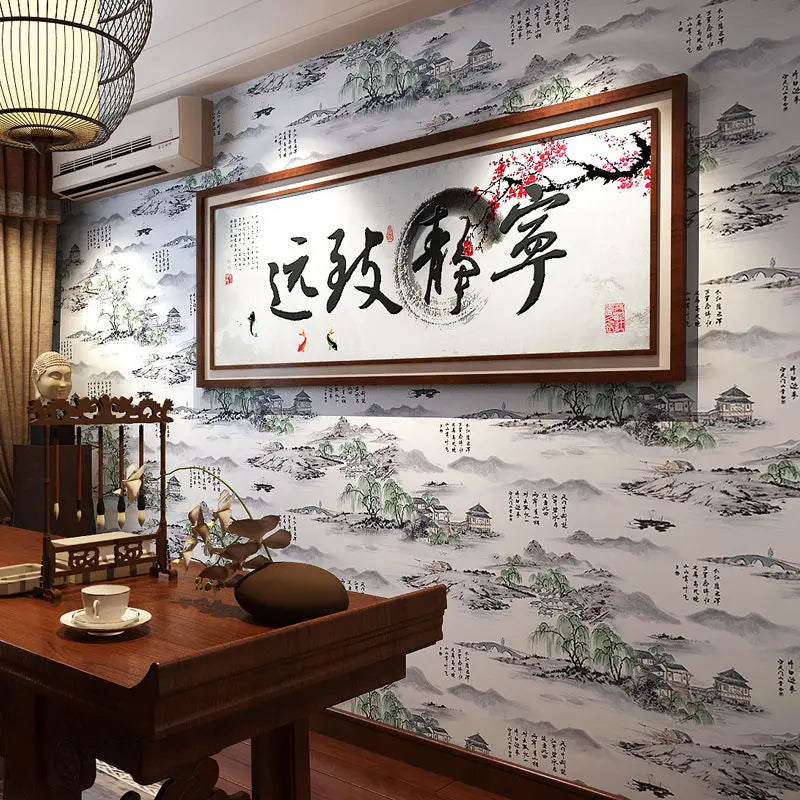How To Remove Old Wall Paper
How to Remove Old Wallpaper: A Complete Guide
Removing old wallpaper can be a daunting task, but with the right strategies, it doesn't have to be. In this guide, we will walk you through the step-by-step process of removing wallpaper, from preparing the room to choosing the right tools and techniques. Whether you're a seasoned DIY-er or a first-time homeowner, this guide will help you transform your walls and give your space a fresh new look.
Preparing for Wallpaper Removal
Before you start removing old wallpaper, it's important to properly prepare the room. Start by gathering all the necessary tools, including a wallpaper scorer, scraper, and a bucket of warm water. Clear the room of furniture or cover it with plastic sheets to protect it from water and debris. Additionally, remove any wall fixtures or switch plates for easier access. By taking these steps, you'll ensure a smooth and efficient wallpaper removal process.
Once you have all your tools ready, score the wallpaper using a wallpaper scorer. This will create tiny perforations in the wallpaper, allowing the warm water to penetrate through and loosen the adhesive. Be careful not to score too deeply, as you don't want to damage the underlying wall. After scoring, apply warm water to the wallpaper using a sponge or a spray bottle. Let it sit for a few minutes to soften the adhesive.
Choosing the Right Removal Technique
There are several techniques you can use to remove old wallpaper, depending on the type of wallpaper and the condition of your walls. The most common methods include:
1. Stripping: This method involves peeling off the wallpaper by hand. It's suitable for wallpapers that are already loose or have a peelable top layer. To remove the wallpaper this way, start at a corner and slowly peel it away from the wall. Use a scraper to gently lift any stubborn areas.
2. Steaming: Steaming involves using a wallpaper steamer to soften the adhesive and make the wallpaper easier to remove. This method is ideal for stubborn or multiple layers of wallpaper. Simply hold the steamer against the wallpaper for a few seconds, then use a scraper to peel it off.
3. Chemical Removal: If all else fails, you can use a chemical wallpaper stripper to dissolve the adhesive. Follow the manufacturer's instructions carefully and wear protective gloves and eyewear. Apply the stripper to the wallpaper, wait for it to penetrate, and then peel it off with a scraper.
Tips for a Smooth Removal Process
Here are some additional tips to ensure a smooth and successful wallpaper removal process:
1. Work in sections: Instead of trying to remove the wallpaper from the entire room at once, work in small sections. This will prevent the wallpaper from drying out before you have a chance to remove it.
2. Use a scraper at a 45-degree angle: When using a scraper to remove the wallpaper, hold it at a 45-degree angle to the wall. This will help prevent damage to the wall surface.
3. Keep the room well-ventilated: Some wallpaper adhesives can emit strong fumes. To protect your health, make sure the room is well-ventilated by opening windows or using fans.
Repairing and Preparing the Walls
Once you have successfully removed the old wallpaper, it's time to repair any damage and prepare the walls for a fresh coat of paint or new wallpaper. Start by inspecting the walls for any holes, cracks, or imperfections. Use spackle or joint compound to fill in any gaps and sand them smooth once dry. For larger holes, you may need to use a patching kit to achieve a seamless finish.
After repairing the walls, make sure to thoroughly clean them to remove any residue or adhesive that may have been left behind. Use a sponge and warm water or a mild detergent to scrub the walls gently. Rinse with clean water and allow the walls to dry completely before proceeding.
Priming the Walls
Before applying new wallpaper or paint, it's essential to prime the walls. Priming creates a smooth surface for the paint or wallpaper adhesive to adhere to, ensuring a long-lasting finish. Choose a high-quality primer that is appropriate for your wall type, whether it's drywall, plaster, or wood. Apply the primer evenly using a roller or brush, and allow it to dry according to the manufacturer's instructions.
Choosing a New Wall Treatment
With the old wallpaper removed and the walls prepped, it's time to decide on a new wall treatment. Whether you prefer the classic look of paint or the versatility of wallpaper, there is a wide range of options to choose from. Consider factors such as the overall aesthetic of the room, the amount of natural light, and your personal style.
If you opt for paint, select a color that complements your existing decor and creates the desired mood. Test the color on a small section of the wall to ensure it looks the way you envision it. If you choose wallpaper, explore different patterns, textures, and finishes to find the perfect fit for your space.
Efficiently Removing Old Wallpaper
Removing old wallpaper doesn't have to be a tedious and time-consuming task. With the right techniques and tools, you can achieve a smooth and efficient removal process. By properly preparing the room, choosing the right removal technique, and following the tips outlined in this guide, you'll be well on your way to transforming your walls and giving your space a fresh new look. So roll up your sleeves and get ready to say goodbye to old wallpaper!
Maintaining Your New Wall Treatment
Once you've removed the old wallpaper and applied a new wall treatment, it's essential to properly maintain it to ensure its longevity. Here are a few tips to help you keep your walls looking fresh and clean:
1. Clean gently: When cleaning your walls, use a soft cloth or sponge and a mild detergent. Avoid using abrasive cleaners or scrub brushes, as they can damage the paint or wallpaper.
2. Address stains promptly: If you notice any stains or marks on your walls, address them as soon as possible. Blot the stain gently with a clean cloth and a mild cleaning solution. Avoid rubbing or scrubbing, as this can cause the stain to spread or damage the wall treatment.
3. Protect high-traffic areas: To prevent excessive wear and tear, consider using protective coverings or adding a chair rail to areas that experience high traffic, such as hallways or entryways.
4. Touch up as needed: Over time, your walls may develop minor imperfections or scuffs. Keep some extra paint or wallpaper on hand to touch up these areas when necessary.
In conclusion, removing old wallpaper can be a challenging task, but with the right strategies and techniques, it's entirely doable. By properly preparing the room, choosing the right removal technique, and carefully repairing and preparing the walls, you'll be able to transform your space and achieve the desired look. Remember to choose a new wall treatment that complements your style and properly maintain it for long-lasting results. So go ahead and take the plunge - your newly refreshed walls are waiting!









